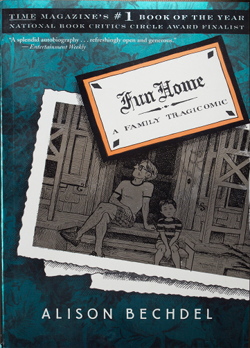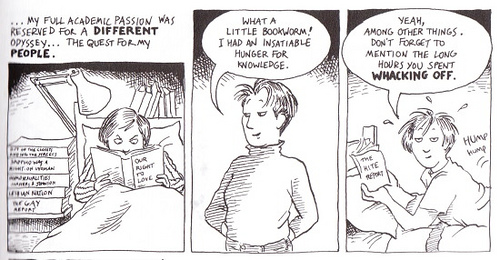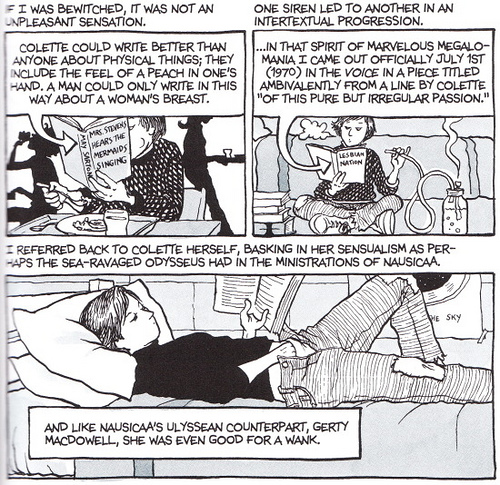There I was in Chapters the other day, not looking for any particular book, and ended up walking out with volume 2 of The Unwritten, Alison Bechdel’s latest graphic novel Are You My Mother?, and John Green‘s The Fault in Our Stars. I’d never read any of his books before, though I’ve been a huge fan of Vlogbrothers and Crash Course for months.
And I told myself I couldn’t start on any of these until I finished Contes du lundi (currently reading) and Faitheist (next on my list). But of course I couldn’t resist. I went through my new acquisitions right away, saving TFiOS for last.
At first it wasn’t the magnificent opus I was expecting. Engaging, moving, brutally honest? Definitely. Hilarious and nerdy? No doubt. Smart and thought-provoking while still totally unpretentious? Oh yeah. Through all of it, I could hear John Green’s voice in the narration. Hard not to, really, I’ve been listening to that voice on my computer for the better part of a year—silly and bouncy when he talks about the Dead Baby Orphanage or whatever, low and quiet and thoughtful during his Thoughts From Places. Every side of him is in Stars, and they manage to mesh together perfectly.
But still, except for a few passages, the first ten chapters didn’t really touch me. That all changed when Gus and Hazel arrived in Amsterdam. I don’t know if John (is it okay if I call him John?) wrote the Amsterdam parts in Amsterdam and the Indianapolis parts in Indianapolis, and if that explains why the Amsterdam parts felt more alive and magical; and now I’m thinking that was deliberate, that that whole trip was magical because it was a granted wish in a world that is not a wish-granting factory. And now I’m thinking maybe I’m overanalysing this. Wouldn’t be the first time.
Regardless, I started to perk up here:
“Are these houses very old?” asked my mom.
“Many of the canal houses date from the Golden Age, the seventeenth century,” he said. “Our city has a rich history, even though many tourists are only wanting to see the Red Light District.” He paused. “Some tourists think Amsterdam is a city of sin, but in truth it is a city of freedom. And in freedom, most people find sin.”
I don’t know why that last sentence intrigued me so much. It kind of sounded like something John might say, except he’s never talked about sin in his videos…
But I kind of lost it a few pages later:
There were elm trees everywhere along the canals, and these seeds were blowing out of them. But they didn’t look like seeds. They looked for all the world like miniaturized rose petals drained of their color. These pale petals were gathering in the wind like flocking birds—thousands of them, like a spring snowstorm.
The old man who’d given up his seat saw us noticing and said, in English, “Amsterdam’s spring snow. The iepen throw confetti to greet the spring.”
I don’t know what elm tree seeds look like, so in my mind all I saw were Vancouver’s cherry blossoms, all shades of pink, brightening up the city just a couple weeks ago. A symbol of renewal and hope but also of the impermanence of all things and if that’s not the perfect accompaniment for two dying teenagers on the trip of a lifetime, I don’t know what is. In my head I was with Hazel and Gus, looking up at the elm tree snow, and I felt so sad for them but also happy because they were having an amazing time and now I wish so badly to visit Amsterdam myself, and I didn’t know if I wanted to laugh or cry so I settled for both.
Talk of champagne as bottled stars (‘Come quickly, I am tasting the stars.’; “We have bottled all the stars this evening, my young friends.”) made me think of Esther Earl, and I know Hazel is not Esther, but how can you not make the connection?
I’m not a fan of champagne and it never tasted like stars to me, but it’s such a beautiful image that next time I drink champagne I’ll think of stars—and, for what it’s worth, I’ll make a wish.





